

| Home | Log In | Register | Our Services | My Account | Contact | Help |
You are NOT currently logged in
dai oldenrich - 20 Mar 2007 09:22
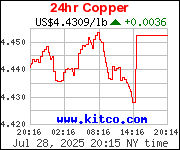
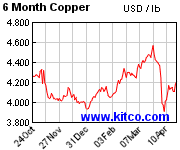
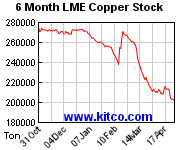
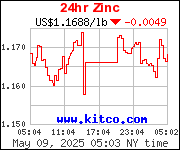
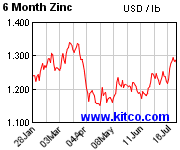
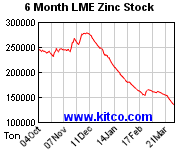
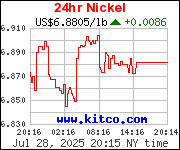
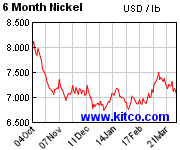
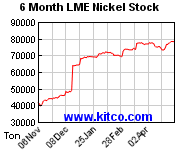
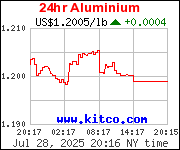
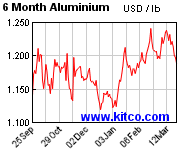
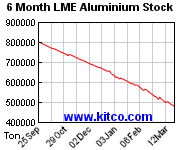
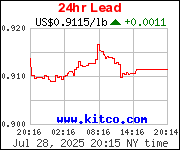
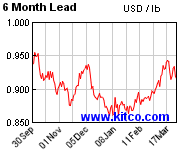
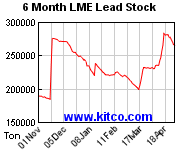

present uranium spot price
Also see: gold charts here silver charts here platinum charts here
Anglo American plc is one of the worlds largest mining and natural resource groups. With its subsidiaries, joint ventures and associates, it is a global leader in platinum group metals, gold and diamonds, with significant interests in coal, base and ferrous metals, industrial minerals and paper and packaging. The group is geographically diverse, with operations in Africa, Europe, South and North America, Australia and Asia.
Upper graph = 12 month share price with 6 month moving average
Lower graph = 12 month volume (red line = volume average).
Packaging and Paper: 23%
Ferrous metals: 20.5%
Industrial minerals: 14%
Platinum: 12.5%
Nonferrous metals: 12%
Coal: 9%
Gold: 9%
Antofagasta has three business divisions: Mining, Transport and Water, being the first of them the most important. Antofagasta plc is one of the largest international copper producing companies in the industry. Its activities are mainly concentrated in Chile where it owns and operates three copper mines, Los Pelambres, El Tesoro and Michilla, with a total production of 498 thousand tonnes in 2004, at an average cash cost of 24.4 c/lb. The Groups mining division, Antofagasta Minerals, is also actively involved in exploration particularly in Chile and Peru. The transport division operates an extensive rail network servicing the important mining region of northern Chile, which is centred on the port of Antofagasta. The water division operates a concession for the distribution of water in this region.
Upper graph = 12 month share price with 6 month moving average
Lower graph = 12 month volume (red line = volume average).
Copper mining: 94%
Rail transport: 4%
Water: 2%
BHP Billiton is the worlds largest diversified resources group. It has seven divisions: Petroleum, Aluminium, Base Metals, Carbon Steel materials, Diamonds and speciality products, Energy coal and Stainless steel materials.
Upper graph = 12 month share price with 6 month moving average
Lower graph = 12 month volume (red line = volume average).
Carbon steel: 28%
Oil: 18%
Aluminum: 15%
Basic metals: 15%
Coal: 9%
Stainless steel: 9%
Others: 3%
Diamonds,
minerals, etc: 3%
dai oldenrich - 20 Mar 2007 09:22 - 2 of 4
Investors could find clues about future stock slides by looking elsewhere: at gold and oil.
The two key commodities, one traditionally a safe haven for investors at times of stress and the other an engine of global
industrial growth, are linked by a ratio that has moved in a narrow range historically. In other words, the number of barrels of
oil you need to sell to buy an ounce of gold remains roughly constant for long stretches of time. Gold tends to move in line
with oil because high oil leads to inflation, which drives people to buy gold as a hedge, goes the argument. Analysts are wary
of linking gold, oil and shares, because shares have risen in the recent past despite a rise in oil prices that should be bad for
companies and hurt growth. But if one views gold as a proxy for product prices, and oil as an indicator of input costs, the gold
-to-oil ratio takes on a different significance, analysts say. The link could be predictive, if the past four years are any indication:
a dip in gold-to-oil has coincided with a fall in share prices, says a strategist. "In periods of risk aversion, the gold-to-oil ratio
tends to go down, in line with share prices," said Lehman Brothers strategist Fred Goodwin. "In equity corrections since 2003,
gold tended to go lower with equities. When markets rallied, gold went up faster than oil; when they fell, gold went down faster."
The bigger trend here is that gold has started moving in line with shares, diluting its traditional image as a hedge. The traditional
investor view is that gold correlates inversely with what markets are fretting about. If concerns over subprime mortgages worry
equity investors, for example, then gold should rise as shares fall. Gold, seen as a refuge for equities investors at times of stress,
has been moving in the same direction as shares for the past few years. This has led some analysts to conclude that a rise in the
price of gold reflects pricing power, or the ability of companies to pass on raw material price increases. This, the argument goes,
should lift the price of companies' shares. "Our view of gold is counterintuitive, because it's really less of a financial hedge and
more of a reflection on pricing power," said Goodwin. That could explain why, since the beginning of 2003, gold and shares have
moved in remarkable consonance. Both gold and the Morgan Stanley index of world stock markets have risen 92 percent. The rise
in gold could be a result of wealth generated from stocks, or in key markets like the Middle East, oil. "Gold is not just a diversifying
asset -- people buy it when feeling richer," said Graham Birch, head of natural resources at investors BlackRock in London. "In the
Middle East, if something makes people richer, as high oil prices tend to do, they spend more on gold." Oil has risen more than 90%
since January 2003, in line with shares and gold. Analysts say it is too early to write off gold's reputation as a hedge, and note that
shares, which have enjoyed a multi-year bull run, are also moving for other reasons. "Gold has moved due to an indexation with base
metals, and oil follows gold. Shares are rising because of good economic growth and strong earnings," said Franz Wenzel, strategist
at AXA Investment Managers.
The two key commodities, one traditionally a safe haven for investors at times of stress and the other an engine of global
industrial growth, are linked by a ratio that has moved in a narrow range historically. In other words, the number of barrels of
oil you need to sell to buy an ounce of gold remains roughly constant for long stretches of time. Gold tends to move in line
with oil because high oil leads to inflation, which drives people to buy gold as a hedge, goes the argument. Analysts are wary
of linking gold, oil and shares, because shares have risen in the recent past despite a rise in oil prices that should be bad for
companies and hurt growth. But if one views gold as a proxy for product prices, and oil as an indicator of input costs, the gold
-to-oil ratio takes on a different significance, analysts say. The link could be predictive, if the past four years are any indication:
a dip in gold-to-oil has coincided with a fall in share prices, says a strategist. "In periods of risk aversion, the gold-to-oil ratio
tends to go down, in line with share prices," said Lehman Brothers strategist Fred Goodwin. "In equity corrections since 2003,
gold tended to go lower with equities. When markets rallied, gold went up faster than oil; when they fell, gold went down faster."
The bigger trend here is that gold has started moving in line with shares, diluting its traditional image as a hedge. The traditional
investor view is that gold correlates inversely with what markets are fretting about. If concerns over subprime mortgages worry
equity investors, for example, then gold should rise as shares fall. Gold, seen as a refuge for equities investors at times of stress,
has been moving in the same direction as shares for the past few years. This has led some analysts to conclude that a rise in the
price of gold reflects pricing power, or the ability of companies to pass on raw material price increases. This, the argument goes,
should lift the price of companies' shares. "Our view of gold is counterintuitive, because it's really less of a financial hedge and
more of a reflection on pricing power," said Goodwin. That could explain why, since the beginning of 2003, gold and shares have
moved in remarkable consonance. Both gold and the Morgan Stanley index of world stock markets have risen 92 percent. The rise
in gold could be a result of wealth generated from stocks, or in key markets like the Middle East, oil. "Gold is not just a diversifying
asset -- people buy it when feeling richer," said Graham Birch, head of natural resources at investors BlackRock in London. "In the
Middle East, if something makes people richer, as high oil prices tend to do, they spend more on gold." Oil has risen more than 90%
since January 2003, in line with shares and gold. Analysts say it is too early to write off gold's reputation as a hedge, and note that
shares, which have enjoyed a multi-year bull run, are also moving for other reasons. "Gold has moved due to an indexation with base
metals, and oil follows gold. Shares are rising because of good economic growth and strong earnings," said Franz Wenzel, strategist
at AXA Investment Managers.
kimoldfield

 - 20 Mar 2007 20:17
- 3 of 4
- 20 Mar 2007 20:17
- 3 of 4
Dai, thanks for this and your Oil and Banks threads; very useful.
e t - 23 Apr 2007 07:26 - 4 of 4
From The Times
April 23, 2007
Copper price could fall after miners win 100% pay rise. Carl Mortished, International Business Editor
The world price of copper will come under pressure this morning after thousands of workers at the Grasberg mine in Papua, Indonesia, ended a four-day strike yesterday. The strike at Grasberg lit up the London Metal Exchanges (LME) copper market last week with conflicting reports over production losses after workers began to protest on Tuesday. Mining companies and their investors are also likely to be perturbed by the fact that Freeport McMoran, the American mining company that owns Grasberg, saw off the strike by agreeing to double workers wages. Firms are worried by rising production costs and are especially concerned that they may start to spiral out of control. More than 6,000 Papuans walked off the job, threatening output at the huge open-pit operation, which produces more than 500,000 tonnes of copper annually and is the Indonesian Governments biggest source of revenue. Anxiety about production cuts at one of the worlds biggest copper resources, together with continuing strong demand from China, combined to push the LMEs three-month copper contract above $8,000 a tonne on Friday. The vast Grasberg operation, which supplies about 4 per cent of the worlds copper, has been plagued with controversy over its effect on the environment, the share of the profits that are received by Papua and relations with the local Papuan workforce. Reports from Indonesia suggested that output at the mine was running at 20 per cent of normal levels during the walkout.
Tongoi Papua, the union representing the Grasberg workers, claimed victory over the weekend. We are satisfied, Frans Pigome, head of Tongoi Papua, said. After more than 40 years in operation, this is the most spectacular increase. They could have increased it years ago, but they think only how to profit themselves. Freeport has agreed to raise basic wages from 1.5 million rupiah (82) a month to 3.1 million rupiah. In addition to the wage increase, the union had been seeking better career opportunities for Papuans at the mine. Freeport Indonesia said that the company had agreed to a feasibility study for the creation of a Papuan affairs department and remained committed to increasing the number of Papuans in senior posts.
The Grasberg strike is the latest incident in a tide of labour unrest that threatens the global mining industry with rocketing wage inflation, another headache to add to the burden of energy costs and an acute shortage of equipment, from lorries to tyres. The price of copper has risen fourfold in five years because of extraordinary increases in demand in emerging markets, notably China, where the construction and manufacturing sectors are consuming copper pipe and wire. Other base metals, such as iron ore and nickel, are benefiting from Asias growth and the soaring rices have raised expectations among mining communities, which are seeking a share of the super-profits from a hot metal market. In March Zambian copper miners secured wage increases of 20 per cent and over the past year Codelco, the Chilean state copper mining company, has suffered a wave of strikes and protests over new labour contracts. A strike at Escondida, the Chilean copper mine operated by BHP Billiton, effectively shut down the worlds biggest copper producer for a month in August last year. In March this year Inco, the Canadian nickel mine recently acquired by CVRD, of Brazil, was shut down in a dispute involving technical and office workers.
GDP figures from China that were stronger than expected caused further jitters in base metal prices last week as traders reacted to expectations of greater demand and, at the same time, fears that China would tighten monetary policy in an effort to dampen demand.
- Page:
- 1

